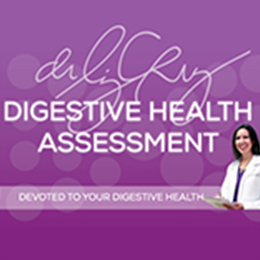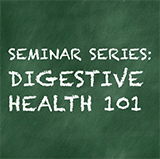What are Hemorrhoids?
Hemorrhoids are vascular “vein” / cushion structures in the anal canal which help with stool control. They become piles when swollen or inflamed and may protrude through the anus on straining. When inflamed they usually contain enlarged veins and are most common in people over the age of 50.
What Causes Inflamed Hemorrhoids?
The exact cause of inflamed hemorrhoids is unknown, but a number of factors are known to contribute to hemorrhoidal disease: aging, chronic constipation, pregnancy, heredity, faulty bowel function due to overuse of laxatives or enemas, straining during bowel movements, spending long periods of time (reading) on the toilet.
What are the Symptoms of Inflamed Hemorrhoids?
You may have inflamed hemorrhoids if you notice any of the following symptoms: bleeding during bowel movements, protrusion during bowel movements, itching in the anal area, pain, sensitive lump(s).
Types of Inflamed Hemorrhoids
Internal hemorrhoids develop inside the anus. The most common symptoms are bleeding during bowel movements or protrusion thorugh the anus upon straining.
External hemorrhoids develop around the anus and can be very painful, especially if a blood clot develops within them. They can be felt as a firm lump around the anus.
Ways to Treat Hemorrhoids
In the past most people would simply tolerate hemorrhoids until they became so severe that surgery was required. Modern techniques have eliminated the need for surgery except in the most advanced cases. These techniques are called rubber band ligation “banding”, laser ablation, and infrared coagulation “IRC”.
Why is Surgery Not the Answer?
Most patients agree that hemorrhoid surgery is one of the most painful surgeries – imagine having stitches in your anus. The other thing to consider is if you remove hemorrhoid completely you are removing the tissue that helps with stool control. After hemorrhoid surgery many patients complain of stool incontinence. It’s better to heal the hemorrhoids than to remove them.
If they are not completely removed will they come back?
Millions of patients have been treated with banding. Experience tells us that hemorrhoids treated non-surgically generally do not reoccur. A sensible diet, moderate exercise, and proper bowel habits will also help.
What is banding?
Banding has been around since the 1960’s and the CHR O’Regan System is a simple, painless, and highly effective procedure (99.1%) that can be performed in less than a minute. How simple is it? Our provider will place a rubber band around the base of hemorrhoid. The banded tissue then shrinks within a day or so. Once this happens your symptoms go away. Although the patient will occasionally feel a little tug, there is generally minimal pain or discomfort – NO anesthesia is required. The patient may return to work the same or next day. Occasionally a little bleeding may occur up to ten days after the treatment.
Which in-office procedure is right for me?
Banding is perfect for people who have inflamed hemorrhoids that are larger and protrude from the tissue of the anus. This allows the provider to easily place a band without touching the nerve sensitive area of the tissue.
How many visits are required?
Only your doctor can make that determination. The number of treatments will depend on the severity of symptoms, the location of hemorrhoids, and the patient’s response to the procedure. The typical number of visits for both procedures is 2 to 3.
What are the risks of banding
Typically, there are no post-treatment effects with this procedure. Most patients return to a normal lifestyle the same day. Just like with any procedure there are some risks that can occur which include but are not limited to: bleeding, pain, and infection which could lead to the use of antibiotics, transfusions, hospitalization or surgery.
After your procedure, at home
After you leave our office:
- Take a sitz bath (soaking in a tub) for 20 to 30 minutes three or four times a day for the next 2 or 3 days if needed.
- You may apply witch hazel or Balneol cream to the rectal area between baths as needed for dryness or local irritation.
- After you have a bowel movement, clean the area with a moistened tissue or with a Tucks pad. Baby wipes are cheaper and probably just as effective.
- Eat a high fiber diet (bran, fresh fruit, and vegetables). Continue this habit forever. Drink lots of fluids.
- Until the rectal area is completely healed, use a stool bulking agent or a stool softener daily to keep your bowel movements very soft. Examples include Dr. Liz Cruz PsylliCleanse, Metamucil, Citracel, Benefiber, Konsyl, or Colace 100 mg capsules. Follow the directions on the package.
- No prolonged sitting or traveling for 10 to 14 days after the procedure.
- Avoid strenuous activity for 24 to 48 hours after the procedure.
- You may have some swelling and weeping of the tissues that have been treated. You can use a sanitary pad to absorb the drainage.
- Note that slight blood-tinged drainage is normal. You may actually have some bleeding for 3 to 7 days after the procedure. Unless bleeding is severe, there should really be no worry. Call your physician if you are concerned. Bleeding may also occur 7 to 14 days after the treatment when the scab comes off.
- Call if you begin running a fever or notice redness or swelling past the rectum anytime after the procedure is done. Also call if you are unable to urinate. Our number is 623-772-6999.
- The swollen tissue inside the rectum can often cause a false sensation and an urge to move the bowels. Avoid prolonged straining and do not take enemas for at least 10 days after the procedure. The enema tube could damage the tissue and cause bleeding.
- Use acetaminophen 1000 mg (2 Extra Strength Tylenol) every 6 hours as needed for pain. No more than 2000 mg in a 24 hour period if you have liver disease.
- Please make a follow-up appointment for approximately 3 to 4 weeks from the day your procedure was performed. Our number is 623-772-6999.





